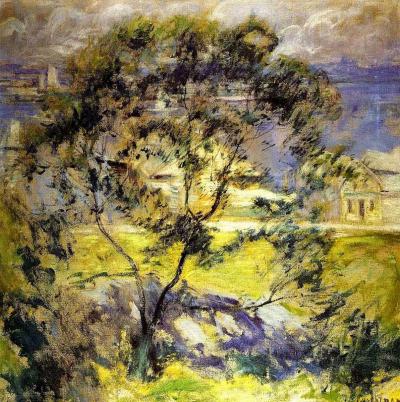Wild Cherry
By Peter Balakian, in Poetry Magazine (Nov. 1994)
How I wore the bark
of the first limb thin,
and pushed my arms
between the tight spaces
fingering the twigs for grip,
forcing my head through
a crown of leaves.
When I wrapped myself
around the last sturdy branch
half-way up,
my hands were streaked with juice
deep red
and the sap on my palms
was catching bark.
I sat on that branch
(no larger than its three spare feet)
feeling how thin the world
above me was—
then hugged the trunk
and like a gray worm
inched along the bark
to where branches
rubbery like vine
were breathing in my ear,
and the leaves slighter
than my fingers
stroked my face.
This high up
what could I hug?
The berries small and dry
and twigs paling red
beyond my arms
were all that stood between me
and the empty blue.
When I dropped my leg—
everyone shouting below
got lost in haze.
My fingers full of leaves
were numb.
Bark falling from my skin
disappeared into dust,
and knots were circles
whirling far away.
One last time
I stretched;
my head light and whirring
like a bluebird’s wing
light around the branches
budding
drying all the black-red
juice, the berry-skin
that clung to me.
Old Lady to King Henry VIII, in Shakespeare’s King Henry VIII:
Ay, ay, my liege;
And of a lovely boy: the God of heaven
Both now and ever bless her! ‘tis a girl,
Promises boys hereafter. Sir, your queen
Desires your visitation, and to be
Acquainted with this stranger ‘tis as like you
As cherry is to cherry.
(V.i)
Leanoard Holmesworthe, in Shakespeare’s Garden, writes that Shakespeare is probably making reference to the cherries cultivated in English gardens (which were often individuals of Prunus serotina).
“Wild Cherry Tree”
1901, oil on canvas, by the American impressionist John Henry Twachtman (1853–1902)
The painting resides at the Albright-Knox Art Gallery, in Buffalo, NY.
